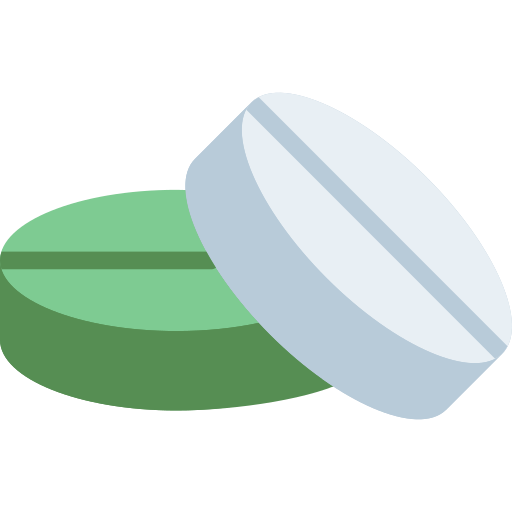
Product Details
Description
Trichomoniasis: Tinidazole is indicated for the treatment of trichomoniasis caused by Trichomonas vaginalis. The organism should be identified by appropriate diagnostic procedures. Because trichomoniasis is a sexually transmitted disease with potentially serious sequelae, partners of infected patients should be treated simultaneously in order to prevent re-infection. Giardiasis: Tinidazole is indicated for the treatment of giardiasis caused by Giardia duodenalis in both adults and pediatric patients older than three years of age. Sections or subsections omitted from the full prescribing information are not listed. Amebiasis: Tinidazole is indicated for the treatment of intestinal amebiasis and amebic liver abscess caused by Entamoeba histolytica in both adults and pediatric patients older than three years of age. It is not indicated in the treatment of asymptomatic cystpassage. Bacterial Vaginosis: Tinidazole is indicated for the treatment of bacterial vaginosis (formerly referred to as Haemophilus vaginitis, Gardnerella vaginitis, nonspecific vaginitis, or anaerobic vaginosis) in non-pregnant women. Other pathogens commonly associated with vulvovaginitis such as Trichomonas vaginalis, Chlamydia trachomatis, Neisseria gonorrhoeae, Candida albicans and Herpes simplex virus should be ruled out. To reduce the development of drug-resistant bacteria and maintain the effectiveness of Tinidazole and other antibacterialdrugs, Tinidazole should be used only to treat or prevent infections that are proven or strongly suspected to be caused by susceptible bacteria. When culture and susceptibility information are available, they should be considered in selecting or modifying antibacterial therapy. In the absence of such data, local epidemiology and susceptibility patterns may contribute to the empiric selection of therapy.
Should be taken with food. Take during or immediately after meals.
The following interactions were reported with metronidazole, which is chemically-related to tinidazole. Alcohol, disulfiram: Avoid during tinidazole use and for 3 days afterward because cramps, nausea, vomiting, headaches, and flushing may occur. Anticoagulants, oral (eg, warfarin): Anticoagulant effects may be increased. Anticoagulant dose may need to be adjusted during coadministration and for up to 8 days after discontinuation. Cholestyramine: Bioavailability of tinidazole may be decreased. Cyclosporine, lithium, tacrolimus: Levels may be elevated by tinidazole, increasing the risk of toxicity. Drugs that induce CYP3A4 (eg, fosphenytoin, phenobarbital, phenytoin, rifampin): May increase metabolism of tinidazole, decreasing plasma levels and therapeutic effect. Drugs that inhibit CYP3A4 (eg, cimetidine, ketoconazole): May prolong t½ and decrease tinidazole Cl, increasing plasma levels and risk of adverse reactions. Fluorouracil: Cl may be decreased by tinidazole, increasing the risk of adverse reactions Fosphenytoin, phenytoin: The t½ may be prolonged and Cl reduced by tinidazole, increasing the risk of adverse reactions. Oxytetracycline: Therapeutic effect of tinidazole may be decreased.
As with other compounds of similar structure, tinidazole, is contraindicated in patients having, or with a history of, blood dyscrasias although no persistent haematological abnormalities have been noted in clinical or animal studies. Tinidazole should be avoided in patients with organic neurological disorders. Tinidazole should not be administered to patients with known hypersensitivity to the compound.
Reported side effects have generally been infrequent, mild and self-limiting. Side effects from the gastrointestinal tract include nausea, vomiting, anorexia, diarrhoea and metallic taste. Hypersensitivity reactions, occasionally severe, may occur in rare cases in the form of skin rash, pruritis, urticaria and angioneurotic oedema. As with related compounds, tinidazole may produce transient leukopenia. Other rarely reported side-effects are headache, tiredness, furry tongue and dark urine.
Pregnancy Category C. Either studies in animals have revealed adverse effects on the foetus (teratogenic or embryocidal or other) and there are no controlled studies in women or studies in women and animals are not available. Drugs should be given only if the potential benefit justifies the potential risk to the foetus.
Compounds of similar chemical structure have produced various neurological disturbances such as dizziness, vertigo, uncoordination, and ataxia. If, during therapy with tinidazole, abnormal neurological signs develop, therapy should be discontinued. Use in Pregnancy & Lactation: Tinidazole is contraindicated during the first trimester of pregnancy. While there is no evidence that tinidazole is harmful during the late stages of pregnancy, its use during the last two trimesters requires that the potential benefits outweigh the possible risk to mother and foetus. Tinidazole is excreted in breast milk in concentrations similar to those seen in serum. Tinidazole can be detected in breast milk for up to 72 hours following administration. Interruption of breast-feeding is recommended during tinidazole therapy and for 3 days following the last dose.
Renal Impairment: Haemodialysis: Additional dose equal to half the usual dose at the end of haemodialysis.
-
Support 24/7
Call us anytime -
100% Safety
Only secure payments